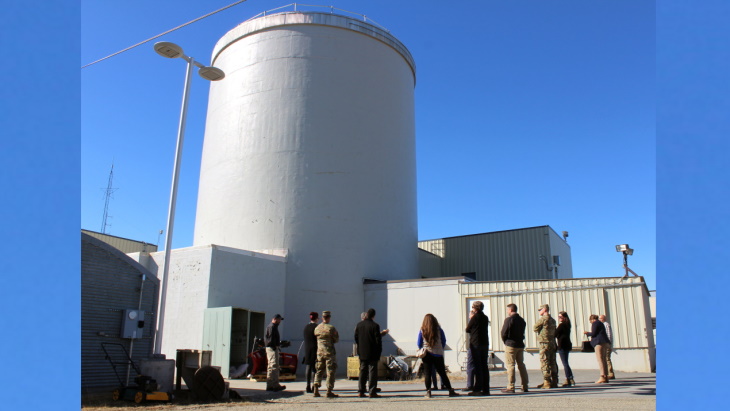
The SM-1A plant at Fort Greely (Image: USACE)
The SM-1A - a single-loop, 20.2 MW (thermal) pressurised water reactor - is located near Delta Junction on the Fort Greely Military Reservation in central Alaska, 225 miles northeast of Anchorage. Based on a prototype for stationary medium-power plants built at Fort Belvoir, Virginia, the reactor was designed as a test facility for this type of equipment in an arctic environment. While its primary mission was to supply electrical power and heating steam for utility systems at Fort Greely, it had a secondary mission to study the economics of operating a nuclear-type electrical plant compared with conventional oil-fired systems in a remote area where fuel costs are high and supply lines unusually long.
Construction of the reactor, which used highly-enriched uranium oxide fuel clad in stainless steel, began in 1958, and first criticality was achieved in March 1962. Following its final shutdown in 1972, the reactor was prepared for safe storage, or 'safstor'. This involved the removal of nuclear fuel, minor decontamination, shipment of pre-packaged radioactive waste, encasing some reactor components in concrete and grout, sealing the pressure vessel, and installing warning signs and monitoring devices. Some areas were maintained as restricted areas for radiation safety considerations.
In August 2022, the US Army Corps of Engineers awarded a USD103 million to Westinghouse Government Services (WGS) for the decommissioning, dismantling and disposal work.
However, A3D protested that award to the US Government Accountability Office, claiming that the US Army Corps of Engineers (USACE) misevaluated the WGS proposal and also failed to engage in adequate, equal discussions with the company. In April, the US Government Accountability Office partially upheld the protest. In its decision it said: "We recommend that the agency eliminate WGS from further consideration for award and make award to one of the remaining firms in the competition, if otherwise proper. In the alternative, we recommend that the agency reopen discussions among the competitors; solicit, obtain and evaluate revised proposals; and make a new source selection decision."
A3D has now received the contract after lowering its bid from USD133.5 million to USD95.5 million.
The work to be performed under this contract includes planning, permitting, and engineering; site preparation; demolition and disposal of facilities, including components from the deactivated and defueled reactor, related wells and utility corridors, plus other ancillary facilities. The contract also includes remediation of contaminated soils, a final status survey, and site restoration.
A3D is a joint venture led by Aptim Federal Services and Amentum Technical Services. Other members of A3D's team include Heritage–M2C1 Joint Venture, a HUBZone small business location in Delta Junction, Alaska; Lynden Logistics; Brice Environmental; Oak Ridge Technologies; ReNuke Services; AECOM Technical Services; and Delta Junction Medical.
Preparatory work at the site by A3D is expected to begin later this year, with the team targeting a full mobilisation to the site by mid-2024. The project is expected to be completed by 2029.
"Aptim and our heritage companies have a long history of supporting USACE and the Army Reactor Office (ARO) and have managed numerous decontamination and decommissioning projects across the federal complex," said David Lowe, senior vice president of Aptim's Nuclear Decommissioning business unit. "Our extensive experience performing reactor decommissioning projects for USACE and the ARO enables us to bring advanced innovations and solutions to complete the work safely and effectively at Fort Greely."
SM-1A is one of three deactivated US Army nuclear plants for which the US Army Corps of Engineers is responsible. The others are the MH-1A, which was installed on the former World War II Liberty ship Sturgis to become the world's first floating nuclear power plant, and SM-1 in Virginia. Decommissioning of MH-1A was completed in 2019; decommissioning of SM-1 is under way with completion expected in 2025.